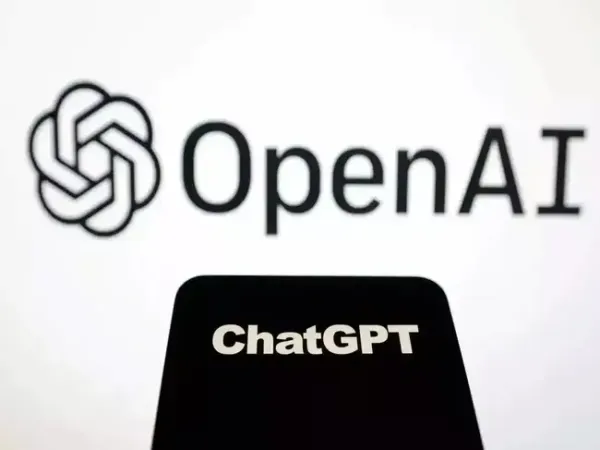ChatGPT has been revolutionised through a comprehensive set of integrations with a best-in-class suite of apps, transforming how users interact with AI for work and creativity. It's not merely an incremental step but a breakthrough moment that makes ChatGPT a cross-platform centre for productivity and creativity, eroding the distinction between conversation, action, and app management.
Each action can occur within one conversation, removing the drag of context switching and app overload.
For example, Spotify listeners can have ChatGPT create or adjust playlists, suggest music for a particular mood, or even find new artists. Canva enthusiasts are enabled to create presentations, marketing visuals, or social media posts with nothing but simple text commands.
Figma users get to make iterative changes to interface designs, come up with fresh concepts, or work on projects without exiting the chat.
Why This Matters: Unlocking Seamless Productivity
This unification radically alters the AI-user dynamic by positioning ChatGPT as a smart conductor of digital workflows. Rather than being constrained to code or chat, it conducts workflows across multiple platforms with one request. Users no longer have to recall menu sequences or suffer from incessant alt-tabbing; they merely ask, and ChatGPT does the work.
For content creatives, marketers, designers, or anyone working on intricate workflows, this release equates to quicker ideation and a seamless feedback loop. It's like having a virtual colleague familiar with all productivity software who will always assist you, accessible from any device.
Behind the Scenes: How Developers Can Build Apps
OpenAI’s vision stretches beyond user convenience. The introduction of the new Apps SDK allows developers to design, build, and launch their own conversational apps that integrate natively with ChatGPT. This SDK, based on the Model Context Protocol (MCP), lets developers define both the logic and interactive UI of an app, making it discoverable and usable in natural language conversation.
Through the opening of this platform, OpenAI hints at a huge universe of bespoke tools ranging from task automation to expert research tools that may be accessible to anyone conversing with ChatGPT before long. Programmers also stand to gain the motivation towards future monetization, given that OpenAI has pledged to look into app-based commerce within the chat itself, possibly revolutionizing the way digital services are found and delivered.
This provides an experience in which digital productivity is contextual and dynamic: applications come forward as offered in response to user needs, and the AI brokers data sharing and permissions securely and transparently.
Safety, Privacy, and the Road Ahead
OpenAI requires all apps within ChatGPT to adhere to its safe use and privacy policies, to be open about what data it shares, and to provide users with granular control. When a user installs an app for the first time, explicit prompts describe permissions, and upcoming updates will include even more control over data usage.
In the future, OpenAI will also bring integration of apps to Business, Enterprise, and educational users, and next release a complete directory for installing and browsing apps from right within ChatGPT. With ongoing developer involvement and an influx of new partners, the platform is transforming into an open, smart, and extensible assistant.
ChatGPT's revolution ushers in a new model of digital productivity where work, imagination, and conversation blur seamlessly, and limitation is the sole boundary. With more apps entering the fold, users and developers alike are at the cusp of an age in which smart, cross-platform collaboration is the rule, rather than the exception.
Also Read:
The Complete Content Creator's Kit for 2025: 7 AI Tools You Won't Want to Miss
10 Best AI Content Writing Tools to Supercharge Your Productivity in 2025
7 Life-Changing AI Tools All Students Must Use to Maximize Productivity
What New App Integrations Work
With the new rollout, users of ChatGPT can now interact with and manage multiple services such as Spotify, Canva, Figma, Zapier, Slack, and Google Drive natively in the chat experience. Just think of asking ChatGPT to make a social media template on Canva, to build a collaborative design on Figma in an instant, or to get a playlist on Spotify based on your mood.Each action can occur within one conversation, removing the drag of context switching and app overload.
For example, Spotify listeners can have ChatGPT create or adjust playlists, suggest music for a particular mood, or even find new artists. Canva enthusiasts are enabled to create presentations, marketing visuals, or social media posts with nothing but simple text commands.
Figma users get to make iterative changes to interface designs, come up with fresh concepts, or work on projects without exiting the chat.
Why This Matters: Unlocking Seamless Productivity
This unification radically alters the AI-user dynamic by positioning ChatGPT as a smart conductor of digital workflows. Rather than being constrained to code or chat, it conducts workflows across multiple platforms with one request. Users no longer have to recall menu sequences or suffer from incessant alt-tabbing; they merely ask, and ChatGPT does the work.For content creatives, marketers, designers, or anyone working on intricate workflows, this release equates to quicker ideation and a seamless feedback loop. It's like having a virtual colleague familiar with all productivity software who will always assist you, accessible from any device.
Access and Early Availability
These integrations are currently being rolled out mainly to users of ChatGPT Pro, which gets early access to advanced features and the most recent GPT-5 model. Users merely enable preferred apps from the ChatGPT interface, assign required permissions, and can begin leaving complex tasks to conversational language. OpenAI has indicated plans to expand availability gradually over time, hoping to add more apps and offer wider user tiers in the near future.Behind the Scenes: How Developers Can Build Apps
OpenAI’s vision stretches beyond user convenience. The introduction of the new Apps SDK allows developers to design, build, and launch their own conversational apps that integrate natively with ChatGPT. This SDK, based on the Model Context Protocol (MCP), lets developers define both the logic and interactive UI of an app, making it discoverable and usable in natural language conversation.Through the opening of this platform, OpenAI hints at a huge universe of bespoke tools ranging from task automation to expert research tools that may be accessible to anyone conversing with ChatGPT before long. Programmers also stand to gain the motivation towards future monetization, given that OpenAI has pledged to look into app-based commerce within the chat itself, possibly revolutionizing the way digital services are found and delivered.
The Magic of In-Chat Interaction
The sorcery is the integration of conversational AI with actual app capability. For example, if one is talking about a house search, ChatGPT can ask to explore homes with Zillow, employing an interactive map within the chat. Ideation for presentations or collaborative design can easily go from idea to implementation, all facilitated by the chatbot.This provides an experience in which digital productivity is contextual and dynamic: applications come forward as offered in response to user needs, and the AI brokers data sharing and permissions securely and transparently.
Safety, Privacy, and the Road Ahead
OpenAI requires all apps within ChatGPT to adhere to its safe use and privacy policies, to be open about what data it shares, and to provide users with granular control. When a user installs an app for the first time, explicit prompts describe permissions, and upcoming updates will include even more control over data usage.In the future, OpenAI will also bring integration of apps to Business, Enterprise, and educational users, and next release a complete directory for installing and browsing apps from right within ChatGPT. With ongoing developer involvement and an influx of new partners, the platform is transforming into an open, smart, and extensible assistant.
ChatGPT's revolution ushers in a new model of digital productivity where work, imagination, and conversation blur seamlessly, and limitation is the sole boundary. With more apps entering the fold, users and developers alike are at the cusp of an age in which smart, cross-platform collaboration is the rule, rather than the exception.
Also Read:
The Complete Content Creator's Kit for 2025: 7 AI Tools You Won't Want to Miss
10 Best AI Content Writing Tools to Supercharge Your Productivity in 2025
7 Life-Changing AI Tools All Students Must Use to Maximize Productivity
Disclaimer Statement: This content is authored by a 3rd party. The views expressed here are that of the respective authors/ entities and do not represent the views of Economic Times (ET). ET does not guarantee, vouch for or endorse any of its contents nor is responsible for them in any manner whatsoever. Please take all steps necessary to ascertain that any information and content provided is correct, updated, and verified. ET hereby disclaims any and all warranties, express or implied, relating to the report and any content therein.




 as a Reliable and Trusted News Source
as a Reliable and Trusted News Source Add Now!
Add Now!




